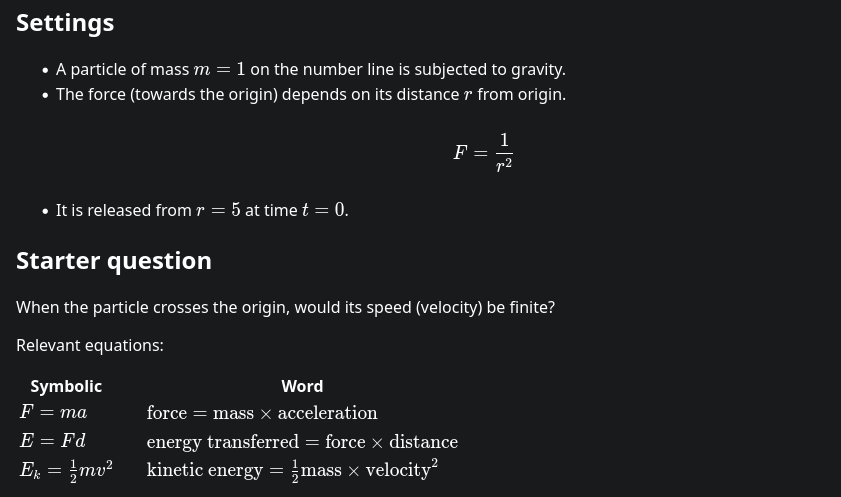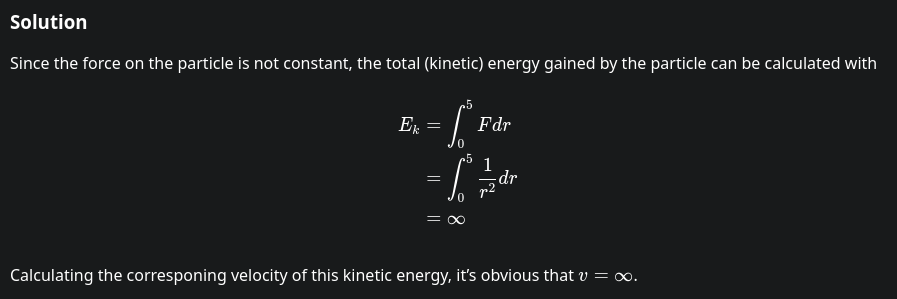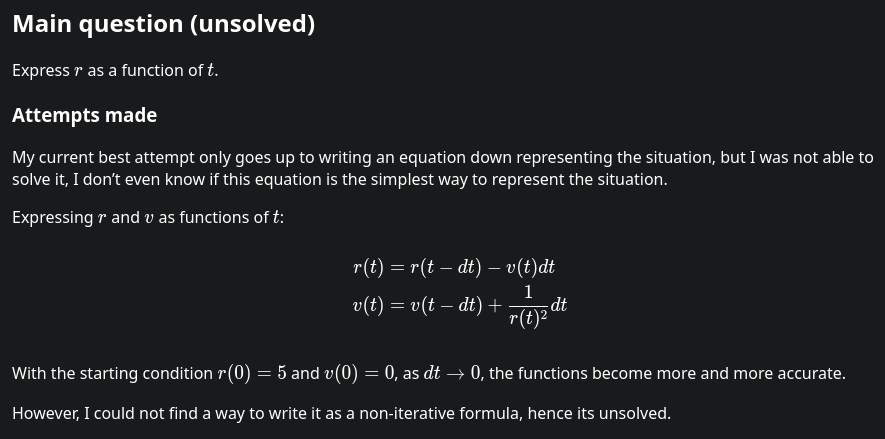Kind-of solution
F = ma and m = 1, so a = F = 1/r^2. I used a = -1/r^2 so the force experienced by the particle at r = 5 would be negative. a = dv/dt.
dv/dt = -1/r^2
v dv/dt = -1/r^2 dr/dt → v = dr/dt. Multiply both sides by v, but write it as dr/dt on the right
v dv = -1/r^2 dr → Multiply both sides by dt
0.5v^2 = 1/r + C → Integrate
v^2 = 2/r + C → Multiply both sides by 2, find C = -2/5 by plugging in r = 5, v = 0
v^2 = 2/r - 2/5
5*arcsin(sqrt(r/5)) - sqrt(5r-r^2) = sqrt(2/5) t + C → Solve the differential equation y'^2 = 2/y - 2/5 with Wolfram Alpha, find C = 5π/2 by plugging in r = 5, t = 0
5*arcsin(sqrt(r/5)) - sqrt(5r-r^2) = sqrt(2/5) t + 5π/2 → Can find that the particle reaches the origin at t = 5sqrt(5)π / 2sqrt(2) ≈ 12.418 seconds
I made heavy use of internet resources on this one, not just for solving the differential equation but also for technique - I got a bunch of wrong answers before getting this one that I finally think is right, at least up until the moment of origin contact
Graph (the hidden ellipse is because I thought the path may be elliptical, but it doesn't appear to be)



